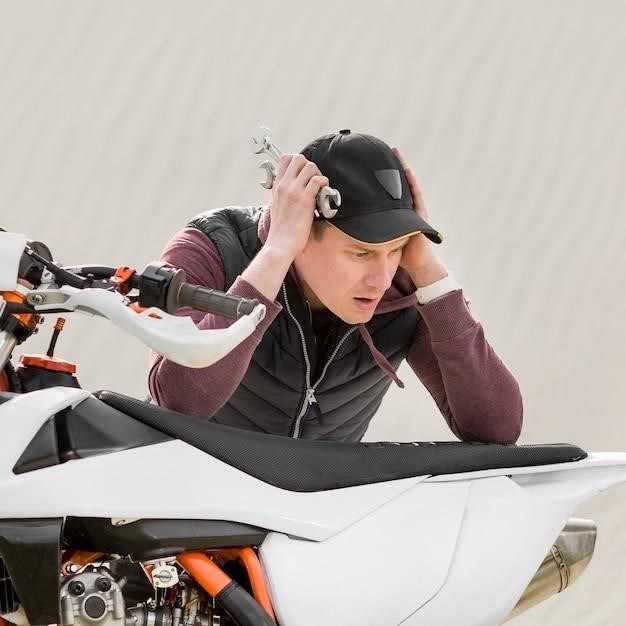Preparing Your Mustang for a Burnout
Before attempting a burnout, ensure your Mustang’s traction and stability control systems are disabled. Select first gear, fully depress the clutch, and rev the engine to your desired RPM. Remember to choose a safe, level surface away from obstacles. Proper preparation minimizes risk of damage.
Disabling Traction Control
Disabling traction control is crucial for a successful burnout. The method varies depending on your Mustang’s year and model. Consult your owner’s manual for precise instructions. Typically, you’ll find a button on the center console labeled “Traction Control,” “ESC,” or a similar designation. Pressing and holding this button for several seconds, often 8, will usually deactivate the system. Some models may require navigating through the infotainment system’s settings menu to find and disable traction control. A visual indicator, usually a light on the dashboard, will confirm that the system is off. Remember, driving with traction control disabled significantly reduces vehicle stability, increasing the risk of accidents. Always exercise caution and only perform burnouts in controlled environments.
Selecting the Right Gear
For a manual Mustang burnout, first gear is the optimal choice. This gear provides the necessary torque to spin the rear tires effectively without overwhelming the drivetrain. Higher gears may result in less wheelspin or even stalling the engine. Starting in first gear ensures sufficient power transfer to the wheels for generating the desired smoke and tire spin. Using a higher gear might lead to a less intense burnout, or even prevent the tires from spinning at all. While some advanced techniques might involve other gears, for beginners, first gear offers the best balance of control and effective tire spin. Remember, always prioritize safety and control during a burnout, regardless of the gear selected. The objective is controlled tire spin, not a catastrophic mechanical failure.
Executing the Burnout
With the engine revved and the clutch depressed, smoothly release the clutch pedal while simultaneously applying the throttle. Maintain firm brake pressure to prevent the car from moving. Control the throttle to manage tire spin and avoid excessive engine strain.
Revving the Engine
Proper engine revving is crucial for a successful and controlled burnout. Begin by engaging first gear and fully depressing the clutch pedal. This isolates the transmission, allowing you to increase engine speed without moving the vehicle. Gradually increase the engine’s RPMs to a point where you feel comfortable, but avoid over-revving, which can cause damage. The ideal RPM range depends on your Mustang’s specific capabilities and your desired intensity of the burnout. A good starting point for many drivers is around 3,000 to 4,000 RPMs. Remember to listen to your engine and avoid redlining; consistently exceeding the maximum RPM can lead to severe engine damage. Pay close attention to the engine’s sound and responsiveness. Once you’ve reached your target RPM, hold the engine speed steady while preparing to release the clutch. Maintaining a consistent RPM throughout the process is key to achieving a clean and controlled burnout. Remember, practice and experience will help you fine-tune your revving technique.
Releasing the Clutch
Releasing the clutch is the most critical step in executing a burnout. With the engine revved to your chosen RPM and your foot firmly on the brake pedal, begin slowly releasing the clutch pedal. The rate at which you release the clutch directly impacts the intensity of the burnout. A quick release will lead to a more aggressive burnout, while a slower, more controlled release will result in a gentler, less intense burnout. The goal is to find the balance between enough clutch release to spin the tires and enough brake pressure to keep the car stationary. If the car starts to move forward, you’re releasing the clutch too quickly; increase brake pressure and try again. If the tires don’t spin, release the clutch more quickly; try reducing brake pressure slightly. Practice is key to mastering this delicate balance. Feel the car’s response as you gradually release the clutch, making small adjustments as needed. Remember, safety is paramount. A poorly executed clutch release can lead to loss of control or damage to your vehicle.
Controlling the Burnout
Maintaining control during a burnout requires a delicate balance of throttle and brake pressure. Once the tires begin spinning, carefully modulate the throttle to control the intensity of the burnout. Avoid abrupt changes to the throttle; smooth, gradual adjustments are key to preventing loss of control. Simultaneously, adjust brake pressure to keep the vehicle stationary. Too much brake, and the tires may stop spinning; too little, and the car may start moving forward. The ideal balance will depend on several factors, including tire condition, engine power, and surface conditions. Experienced drivers often use small, quick adjustments to the throttle and brake to maintain a consistent level of tire spin. Remember, practice makes perfect; the more burnouts you perform, the better you’ll become at controlling the process. Always prioritize safety and be prepared to react swiftly if the car starts to move unexpectedly. Consistent practice allows you to refine your technique and execute impressive, controlled burnouts.

Post-Burnout Considerations
After completing a burnout, allow your Mustang’s brakes to cool down to avoid brake fade. Carefully inspect your tires and drivetrain for any signs of damage, such as excessive wear or leaks. Addressing issues promptly is crucial.
Cooling Down the Brakes
Overheating brakes during a burnout is a serious concern. High-speed spinning tires generate immense heat transferred to the brake rotors and calipers. This extreme heat can cause brake fade, significantly reducing braking effectiveness and posing a safety risk. To prevent brake failure or diminished performance, allow ample time for the brakes to cool after a burnout. Avoid any sudden or hard braking immediately after the burnout. Gentle braking is advised to gradually reduce speed. Consider driving at low speeds for several minutes, allowing airflow to dissipate the heat. If possible, let the vehicle sit idle for a period to allow for passive cooling. Regular brake inspections after burnouts are vital to ensure the integrity of your brake system. Ignoring brake cooling can lead to warped rotors, damaged calipers, and potentially dangerous driving conditions. Prioritizing brake cooling is essential for safe driving practices.
Checking for Damage
After performing a burnout, a thorough inspection of your Mustang is crucial to identify any potential damage. Carefully examine your tires for excessive wear, blistering, or any signs of separation. Check for any unusual smells emanating from the tires, wheels, or drivetrain, indicating potential overheating or damage. Inspect the axles and universal joints for any signs of stress or damage, paying close attention to the boots. Listen for any unusual noises coming from the transmission, differential, or drivetrain components that might indicate internal damage. Look for any leaks under the vehicle from the transmission, differential, or axles. If any damage is suspected, refrain from driving the vehicle until a professional mechanic can assess the situation. Ignoring potential damage can lead to more extensive and costly repairs down the line. Remember, prioritizing safety and careful inspection is paramount after any high-stress activity such as a burnout.

Advanced Techniques (Optional)
For experienced drivers, a line lock can aid in controlled burnouts. Mastering clutch control and throttle modulation allows for extended and more consistent tire spin. Practice is key to developing smooth, controlled burnouts.
Using a Line Lock
A line lock is a valuable tool for executing controlled burnouts in a manual Mustang, especially for beginners. This system electronically locks the front brakes, preventing the vehicle from moving forward while allowing the rear wheels to spin freely. This eliminates the need for precise brake and throttle modulation during the burnout initiation, greatly simplifying the process. With the line lock engaged, you can focus solely on controlling the engine speed and the amount of wheel spin. This results in cleaner, more consistent burnouts with less risk of unintended movement or stalling. However, remember that even with a line lock, it’s crucial to be mindful of potential damage to your transmission, axles, and tires. Always practice in a safe, open area. Before using the line lock, familiarize yourself with its operation and safety precautions. Improper use can lead to accidents.
Mastering Burnout Control
Mastering burnout control in a manual Mustang involves precise coordination of throttle and clutch. Begin by smoothly releasing the clutch while simultaneously applying throttle. The goal is to find the sweet spot where the engine RPMs remain high, preventing stalling, yet the tires spin consistently without overwhelming the drivetrain. Practice makes perfect; start with short, controlled bursts of wheelspin, gradually increasing duration and intensity as you gain confidence and experience. Pay close attention to your car’s behavior, learning to identify the signs of impending wheel hop or excessive tire slip. Adjust your throttle input accordingly to maintain a smooth, controlled burnout. Remember that tire wear increases significantly during burnouts, and the risk of transmission or drivetrain damage is always present. Prioritize safety and practice responsibly.